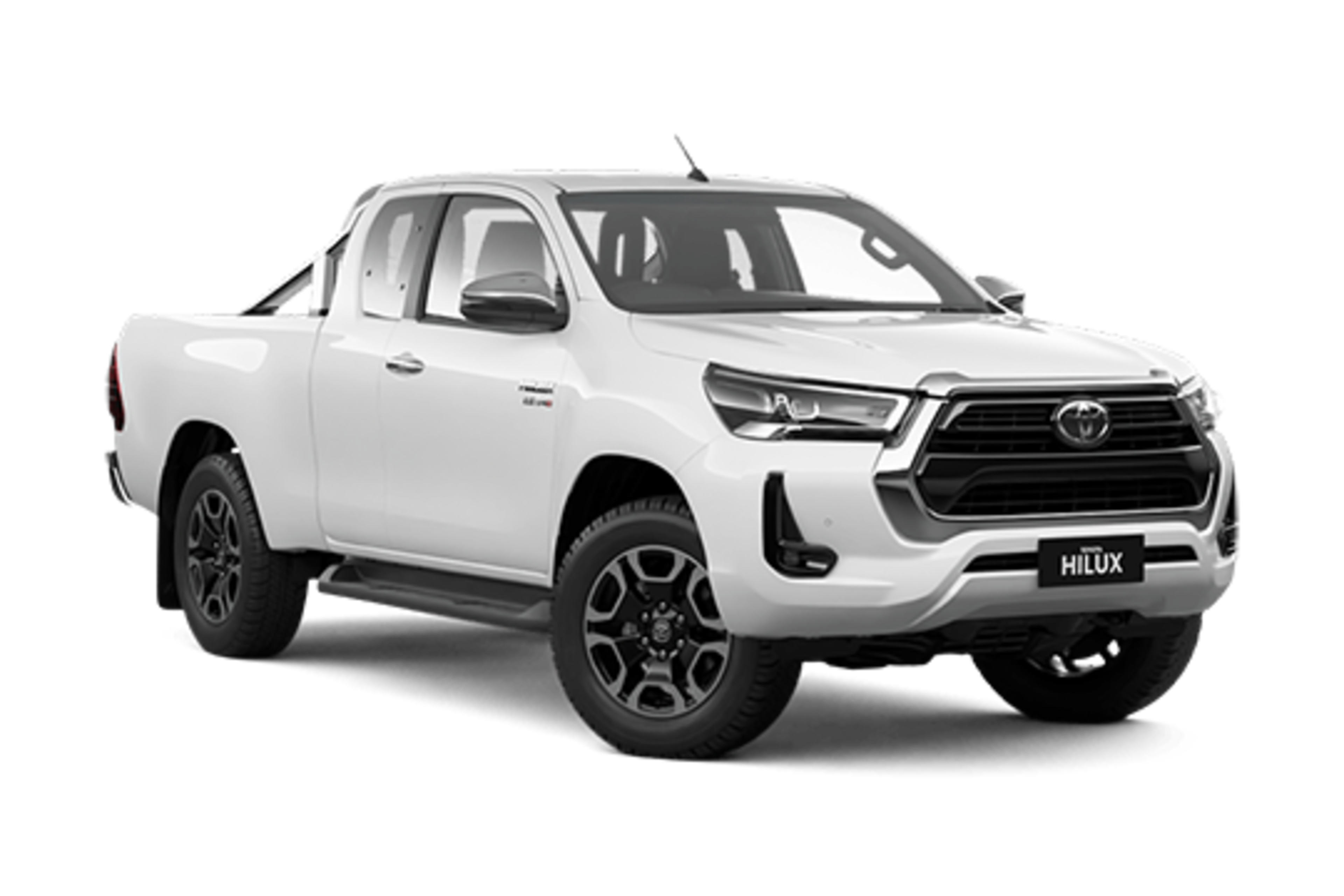HiLux - A Look Through The Ages
27 September 2021 · Our Blog - Read The Latest Articles
HiLux - A Look Through The Ages
Sir Leslie Thiess brought the iconic Toyota HiLux to Australia shortly after they were released in Japan for use in Queensland mining and construction interests in the 1960s and Australia has never looked back. Downtown Toyota takes a trip down memory lane and looks at the evolution of the Toyota HiLux.

First Generation (N10) - 1968
The first Toyota HiLux technically wasn’t a Toyota at all but was actually manufactured by Hino under an agreement stemming from a few years earlier with the Hino made Toyota Briska. It started production in March 1968 as a short-wheelbase 3 seater with a 1.5L inline-four engine, making a polite 57kW (76hp). It was mated with a four-speed column shift gearbox with rear-wheel drive. The 1.5-litre engine was upgraded to a 1.6 L inline-four in February 1971.

Second Generation (N20) - 1972
A relatively minor generational update, new styling and a more comfortable cabin started the path to a less-utilitarian utility vehicle. In 1975, a mid-generation update saw a redesign to make it longer with improved standard equipment and a bigger engine. It was available with a 2.0L engine and an optional 3-speed automatic transmission. Despite the length gain, the deck and payload remained the same.

Third Generation (N30) - 1978
This was the first 4WD HiLux model (1979), as well as the first double-cab design with two rows of seats (1981). It also had the first diesel engine (1979). It was a game-changing generation. Improvements made to the front suspension was just part of further improvements to the 2WD version’s comfort and ride as more car-like features were added across the range. The standard engine was a 1.6L carried forward from the previous generation but optional 1.8, 2.0, 2.2 and 2.4 petrol engines were also available at varying times, as well as the 2.2L diesel.

Fourth Generation (N50) - 1983
The first fuel-injected engine. The solid front axle on the 4WD model was replaced by an independent front suspension/torsion bar unit in 1986. The HiLux family continued to grow with a wide selection of engine variants, including a turbocharged petrol variant, the first V6 engine, which was made available in 1988. Also available in Single Cab, Xtra Cab and Double Cab variants, the push to a more comfortable daily drive utility continued with improved interior and more powerful and efficient engines. The second best car of the Back to the Future series was Marty’s dream car, a black Toyota HiLux with all the bells and whistles. This model was also the first manufactured outside Asia with a plant in Uruguay.

Fifth Generation (N80) - 1988
Production continued to spread with the N80, with new assembly lines coming online in Argentina, Colombia, Germany (sold as a VW Taro) and the United States. While not reducing its capability, this HiLux finally lost its truck heritage with modern suspension systems across the range. Further comforts inside (including roomier cabs) and out were added and the engine variants continued to impress, with up to 112kW (150hp) on the V6. The 4WDs were clearly styled as being the only ones with fenders and wheel arch flares. The HiLux was officially a multi-purpose daily drive. If you’re a petrol-head, then you’ve most likely seen Jeremy Clarkson and co attempt to destroy a red N80 ‘unbreakable’ Toyota HiLux on Top Gear with little success. Comfortable and “bomb proof”, what more could you want?

Sixth Generation (N140) - 1997
While popularity continued to grow around the world, this model was the last to be manufactured and sold in Japan. Only minor updates were made as the design was well and truly tried and tested. Globally, the push to more environmentally friendly vehicles meant the development of new engines being dropped into the surviving chassis. The most powerful again being the lone V6 option putting out 142kW (190hp).

Seventh Generation (AN10) - 2004
Developed alongside the Innova minivan and the Fortuner SUV, the new 21st-century HiLux was the first developed as part of the Innovative International Multi-purpose Vehicle project; a program that was designed to make cross-model vehicle manufacturing more efficient. It marked the truest form of the HiLux reaching the comfort of a passenger vehicle with the convenience of an SUV. This is the longest-serving generation of HiLux to date and saw facelifts in 2008 and 2011. In Australia, the first supercharged petrol Hilux went on sale as a Toyota Racing Development (TRD) 4000S and 4000SL with 225kW (302hp). Meanwhile, the standard V6 VVT-i DOHC could churn out a healthy 170kW (228hp).

Eighth Generation (AN120) - 2015
The eighth and latest generation HiLux offers more variations than ever before and truly embodies the HIgh LUXury branding of its 1960’s predecessor. Engines range from a 2.0L Dual VVT-i petrol engine to the 4.0L VVT-i V6, alongside a wide range of turbocharged diesel engines. A facelift was unveiled in 2020 with a HiLux first LED headlamps and taillamps, alloy wheels and Toyota Safety Sense. The development continues with Toyota announcing in 2019 that an electric version of the HiLux is in the work for sometime around 2025.
Let Downtown Toyota Put You In The Driver’s Seat
At Downtown Toyota, we love the HiLux and have years of experience fitting the right HiLux to the right person. Regardless of you need it for work, play or both, we have the HiLux to suit your needs and budget. Contact us today to organise a test drive or check out our finance options before purchasing online through our website.